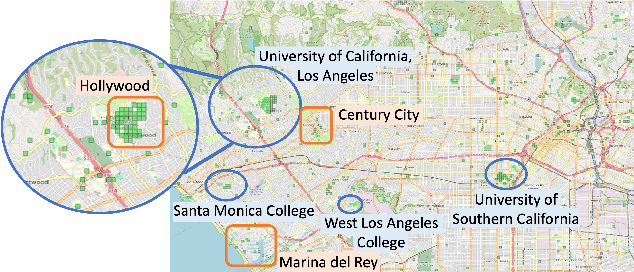JangHyeon Lee
Building Machine Learning Challenges for Anomaly Detection in Science
Mar 03, 2025Abstract:Scientific discoveries are often made by finding a pattern or object that was not predicted by the known rules of science. Oftentimes, these anomalous events or objects that do not conform to the norms are an indication that the rules of science governing the data are incomplete, and something new needs to be present to explain these unexpected outliers. The challenge of finding anomalies can be confounding since it requires codifying a complete knowledge of the known scientific behaviors and then projecting these known behaviors on the data to look for deviations. When utilizing machine learning, this presents a particular challenge since we require that the model not only understands scientific data perfectly but also recognizes when the data is inconsistent and out of the scope of its trained behavior. In this paper, we present three datasets aimed at developing machine learning-based anomaly detection for disparate scientific domains covering astrophysics, genomics, and polar science. We present the different datasets along with a scheme to make machine learning challenges around the three datasets findable, accessible, interoperable, and reusable (FAIR). Furthermore, we present an approach that generalizes to future machine learning challenges, enabling the possibility of large, more compute-intensive challenges that can ultimately lead to scientific discovery.
Context-Aware Trajectory Anomaly Detection
Oct 24, 2024



Abstract:Trajectory anomaly detection is crucial for effective decision-making in urban and human mobility management. Existing methods of trajectory anomaly detection generally focus on training a trajectory generative model and evaluating the likelihood of reconstructing a given trajectory. However, previous work often lacks important contextual information on the trajectory, such as the agent's information (e.g., agent ID) or geographic information (e.g., Points of Interest (POI)), which could provide additional information on accurately capturing anomalous behaviors. To fill this gap, we propose a context-aware anomaly detection approach that models contextual information related to trajectories. The proposed method is based on a trajectory reconstruction framework guided by contextual factors such as agent ID and contextual POI embedding. The injection of contextual information aims to improve the performance of anomaly detection. We conducted experiments in two cities and demonstrated that the proposed approach significantly outperformed existing methods by effectively modeling contextual information. Overall, this paper paves a new direction for advancing trajectory anomaly detection.
 Add to Chrome
Add to Chrome Add to Firefox
Add to Firefox Add to Edge
Add to Edge